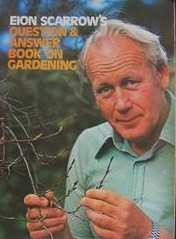Triangular Television
By Margo White
Originally published in the NZ Listener, October 24 1998
It's TV, Jim, but not as we know it
You come across the most bizarre scenes on television these days. You can, for instance, watch a programme in which a very large metal raft carrying a man and his van slowly motors its way across a lake. There is little in the way of voice-over or editing, and certainly no soundtrack; only the slow, hypnotic sounds and sight of a large metal raft cutting through the water.
This, it eventually transpired. was an infomercial for a MyArk. A MyArk can fold itself upright and be towed behind a vehicle. I I saw it on Triangle television. Not your cup of tea? Try instead Back of the Y. This, apparently, is cutting-edge television. With production values the cost of a sock, and much chopping off of heads and jumping on moving cars, Back of the Y is rough, raw, comic-strip Violence. It is mostly stupid, although it does have some magic moments; a pretend fight with a parking warden ends with a real police car and a real ambulance arriving on the scene. Probably the most outrageous feature of Back of the Y is that it has actually made it to air.
Also on Triangle: Slightly Delic (in which a local woman gets drunk and films herself gatecrashing parties), Nature Newz (a man with a mike talks about things such as the kea at Auckland Zoo), Cantonese news, French racing programmes, public service messages from Family Planning, Indian sitcoms and German movies. That is, German movies Without subtitles.
This is not TV as we have known it.
Triangle Television, Auckland’s first venture into community-based broadcasting, is staffed by six people working from a small, sunny office in Grey Lynn. It is no mean feat that it has come this far. It took five years and several revised applications before the company was eventually awarded a UHF frequency at the end of 1996. The following year Aotearoa TV, Max TV, Horizon Pacific and Telecom’s cable trials all toppled out of the air-enough to crush any but the most resilient broadcasting spirit and certainly the enthusiasm of potential funding bodies.
It could have been good night nurse had Michael Horton‘and the Lottery Grants Board not come to the rescue earlier this year. Says manager, Jim Blackman:
And we were fortunate that, at the same time, there were significant advances in technology. This station is now, perhaps, one of the most digitised stations in the country. The transmission gear we’ve got is the first installation of its kind that Sony has done anywhere in the world.Triangle doesn’t buy or make programmes itself. Instead, local programme-makers pay to screen their programmes for around $350 per half-hour. Up to six minutes a half-hour can be used for advertising or sponsorship and the fees put towards the costs of programme production. However, under the company’s mandate, neither the programme-makers nor Triangle can make a profit.
Beginning at 6:00pm, the station broadcasts six hours of scheduled programmes, which are automatically repeated until the same time next day. Currently only around 20 percent of the schedule is locally made or provided. Blackman hopes and expects that proportion to increase, but in the interim he is padding the schedule with two satellite broadcasts that he can pull down for free: Deutsche Welle and WorldNet. Hence the odd-looking news broadcasts featuring alarmingly graphic news footage and German movies without subtitles.
They go down a treat!insists Blackman.Look at the way those are shot they’re beautiful.Blackman speaks much of
diversity, of beingcommunity- based, of catering toinvisible communities. However, in terms of knowing his audience, he seems to be operating on gut instinct rather than demographic breakdowns.For instance, just how many German-speakers are there living in Auckland?
You’d be surprised. Yeah. How many Spanish? How many Chinese? That’s the thing about Auckland. It’s so colourful and so diverse. But we’re getting very positive feed- back on those German films from people who don’t speak German, who just love the way they look.He also says that he gets feedback from people who do speak German, but he is vague about exact numbers.Later, he says:
One of the hardest things we’ve found is to get people to take us seriously.It would be unfair, then to over- emphasise the German movies. Back of the Y seems to have gained a cult following, receiving 1200 hits on its website when it first went to air. Not bad for a tin-pot programme screening in the bowels of the evening on a largely unknown UHF channel. Blackman also points to a scrapbook filled with letters from viewers who say that his station is offering some of the best television they’ve seen for years.Oh, and after the MyArk ad screened, the company actually sold one.


Comments powered by CComment